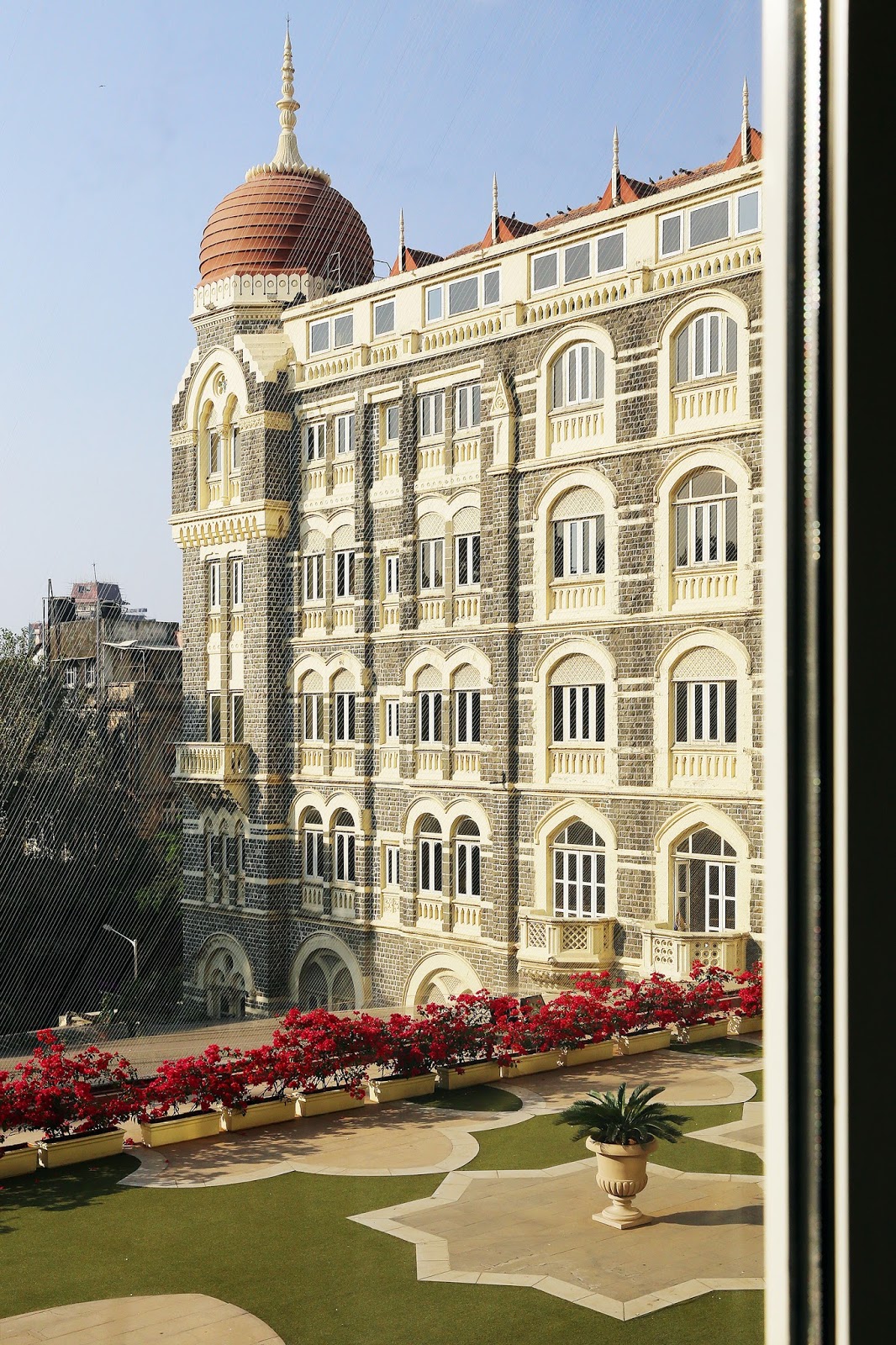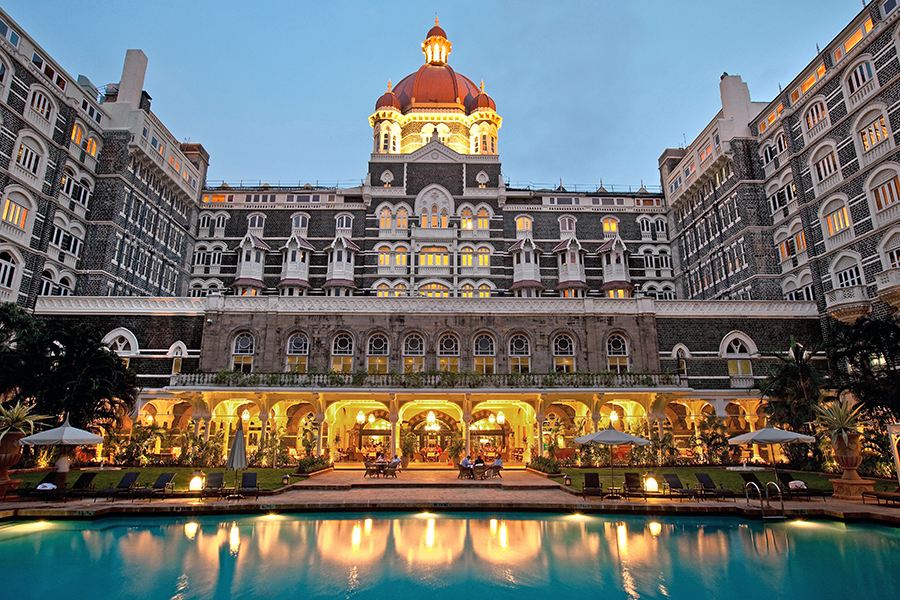
Vishnu take the wheel! Not even the most prolifically-limbed of Hindu deities could have handled the series of many unfortunate events that plagued my very short time in Mumbai, India. By now you'll have heard me garble like a broken record on both Instagram and on my previous India travel stories about how my Mumbai trip (en route to Jaipur) was marked by drama after drama. Funnily enough, I had almost managed to blank the debacle(s) from my memory UNTIL this month's #TRAVELLINKUP topic "Why Travel is Good For Your Wellbeing" triggered some serious BTSD (that's Bombay Traumatic Stress Disorder). Travel, good for my wellbeing? Not today Satan, not today!
If not for an extremely relaxing, luxurious, and exceptional stay at the iconic The Taj Mahal Palace Hotel I would honestly never come back to Mumbai. Well, when life gives you lemons, make gin and tonic, and so; here are my pictures and thoughts from my short stay at the landmark of luxury that is this Grand Heritage Hotel.

Said to be the second most photographed building in India - the first being, of course, the landmark of love it is named after - the original building of The Taj Mahal Palace Hotel is a seven-tiered wedding cake of Moorish, Rajput, Gothic, Greco-Roman, and Oriental architecture topped with a Florentine dome. Befitting its status as a "Heritage Grand" 5-star hotel, in 2017 The Taj Mahal Palace Hotel acquired an image trademark making the hotel the first building in the country to receive intellectual property rights protection for its architectural design. The hotel is as picturesque as it is iconic, with its grand facade looking out onto the Arabian Sea and facing the Gateway of India. On any given day you'll find hundreds of admirers on the promenade angling to fit into a selfie with this famous landmark. But of course, the greatest treasures are contained within, which I was keen to uncover during my short stay.



The Taj Mahal Palace Hotel cemented its place in history with its forward thinking, liberal attitude, and ground-breaking choices. Even its inception was born out of defiance - the hotel was built in 1903 by the Parsi industrialist JN Tata, allegedly after he was refused entry to nearby European hotels on account of being ‘a native’. Tata went on to make history with his hotel being the first in India to employ women, the first to install electricity, fans, German lifts, and Turkish baths; to house Mumbai's first licensed bar, India's first all-day dining restaurant and the country's first "international discotheque". The Taj Mahal Palace Hotel also housed, at no charge, freedom-fighters during the struggle for independence. Naturally, the hotel became Mumbai's place to see and be seen, and the icon of Indian modernity and hospitality.



For setting a shining example for the nation's growth toward modernity, The Taj Mahal Palace Hotel has very much earned its place in history and in the heart of its countrymen. After the tragic attack in 2008 which was deigned to "strike a blow against a symbol of Indian wealth and progress", the The Taj Mahal Palace Hotel was rebuilt, restored, and reopened - with the most stringent security screening process for all who enter, making it quite possibly now the safest hotel in India - with the same noble and defiant spirit it was born from, earning its rightful status as a "...symbol of the strength and the resilience of the Indian people."
While The Taj Mahal Palace Hotel boasts a world of cuisine with its nine eateries - including Indian, Japanese, Middle Eastern, Szechuan, European restaurants and a patisserie - the hotel's most well-known culinary destination is quite likely the Sea Lounge. The buffet breakfast is nothing short of excellent, with a varied international spread, even if I did eschew it for the hotel's famous pastries, because if you can't eat croissants and cakes for breakfast when you're travelling, when can you ever? Outside of breakfast, the Sea Lounge is regarded as an institution for traditional Afternoon Tea - with that beloved elaborate spread of classic English delicacies, spiced up with Indian favourites - and for its lunch and dinner offerings of light fare and Mumbai street food. In the evenings, live singers set the tone for an atmospheric evening of cocktails with a view of the twinkling lights from the moving ships on the harbour.
It's the little mint-green antechamber off the main space that is the most sought-after, and its easy to see why: with majestic views of the Arabian Sea, art deco stylings, and a choice of seating by the sun-drenched windows or little nooks seemingly carved from the room's walls, the green room is a cozy little slice of calm and refinement in an already rarefied atmosphere. Indeed, the Sea Lounge is a favourite in high circles - its the preferred venue for for upper-class couples and their matchmakers, who flock there looking for love, as it were.
Nothing is left to chance at The Taj Mahal Palace Hotel. Every single space, be it a corner in a corridor thoughtfully outfitted with an upholstered armchair (above) or a small space between suite doors tastefully kitted out with one of the hotel's many antiques, contains a detail to be examined. The interiors are no less than extravagant, boasting Italian marble floors, Belgian chandeliers and 4,000 works of art (most of them antique).
This is a hotel begging to be explored, with more antechambers and nooks and crannies than a hide-and-seek champion could ever ask for. In the palace wing, 285 of the hotel's 600 guest rooms run off a series of sun-kissed filigreed galleries that open up to a skylight (below). Then there is the piece de resistance: the magnificent ornamental cantilever stairwell (bottom) which curves and rises several floors inside the palace wing to meet the Florentine domed ceiling.
The Taj Mahal Palace Hotel employs 1,600 staff (which averages to 2 employees per guest), all of which are impeccably trained in the hotel's famous century-old hospitality and also well-versed in its illustrious history. For a Signature Experience, one of the 35 butlers will take you on a Heritage Walk throughout the hotel's hallowed halls.








From my prime position, I had the perfect view of the going-ons in the city's most popular destination. In fact, I got more than I bargained for - being a public holiday, it seemed that all of Mumbai descended upon the the harbour and later that evening I had the best seats to watch the outdoor political rally hosted at the Gateway of India. Thus I had the unusual privilege of enjoying both the restful luxury I had so badly craved as well as witnessing the city at its most happening.
Superior rooms in the Tower start at around £150, Luxury Grande rooms in the Palace from £235, Taj Club rooms from £280, and Executive Suites and upwards from £670.
Although the city of Mumbai was not especially kind to me, The Taj Mahal Palace Hotel was thankfully an exception - esconcing me in a bubble of hospitality, comfort, and luxury that provided a very necessary airbag to the car crash that was my bad luck in Bombay. While I won't say that I'm in any hurry to return to the city, if I ever do there is only one choice as to where I'll stay - and you can be sure it'll be in the Palace Wing, facing the Gateway of India.













